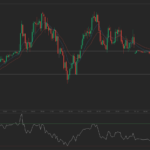Gold declined on Wednesday as investors assessed the outlook for Fed stimulus cuts at the upcoming FOMCs meeting.
On the Comex division of the New York Mercantile Exchange, gold futures for settlement in February lost 0.11% to trade at $1 240.40 per troy ounce by 08:30 GMT. Prices touched a session high at $1 243.40, while day’s low was touched at $1 238.90 an ounce. Yesterday gold futures declined by almost 1%, the biggest daily decline since December 30th.
Gold futures settled last 5-day period 0.45% higher, after adding 0.95% in the previous week. However, the precious metal settled last year 28% lower, the steepest annual decline since 1981 as investors lost faith in the metal as a store of value.
There is “more pain to come” for gold prices as further rally in the equity markets will decline the need for haven assets, Morgan Stanley analysts wrote in a report today, cited by Bloomberg.
Fed stimulus outlook
A series of recent overall upbeat data provided signs that US economic growth is accelerating and recovery seemed sustainable. US home construction slowed less than analysts had projected, while industrial output expanded for a fifth consecutive month. Only the consumer sentiment came at a lower-than-expected reading in January, but this was not enough to change the overall market consensus that Fed will continue tapering throughout 2014.
A report by the US Commerce Department on Friday, showed that housing starts decreased 9.8% to 999 000 annualized rate in December, after they have been revised to 1.11 million pace in the previous month, the strongest figure since November 2007. Analysts had expected that housing starts will decline to 985 000 in December. Building permits fell by 3% to a 986 000 pace.
Last year, builders began constructing 923 400 homes, which is 18.3% higher than a year ago and is the largest number since 2007, when 1.36 million houses were constructed.
At the same time, industrial production in the United States rose 0.3% in December on a monthly basis, in line with expectations, supported by overall recovery in manufacturing and mining sectors. On annual basis, industrial output expanded 3.7% in December, or 0.9% higher than the peak registered before the global recession. November’s result has been revised down to a 1.0% increase from 1.1% gain previously. In October and September, however, nation’s industrial production has been moderately revised up.
Gold drew some support, following the release of a worse-than-expected consumer sentiment data in January. January’s preliminary reading of the Thomson Reuters/University of Michigan consumer sentiment index registered at 80.4, defying analysts’ projections for an advance to 83.5 from December’s final reading of 82.5.
Central bank’s policy makers said on December 18th that they will reduce monthly asset purchases to $75 billion from $85 billion, underscoring improving labor market conditions.
The central bank will probably continue to pare stimulus by $10 billion at each policy meeting before exiting the program in December, according to a Bloomberg News survey of 41 economists, conducted on January 10th. The Federal Open Market Committee is scheduled to meet next on January 28-29.
A stronger US dollar also weighed. The US dollar index, which measures the greenback’s performance against a basket of six major peers, rose by 0.10% on Tuesday to trade at 81.29 by 08:29 GMT. Prices shifted in a daily range between day’s high and low, 81.31 and 81.13. The contract settled last week 0.76% higher. Strengthening of the dollar makes commodities priced in it more expensive for foreign currency holders and limits their appeal as an alternative investment.
Assets in the SPDR Gold Trust, the biggest bullion-backed ETP, remained unchanged at 797.05 tons, after surging by 0.9% on Friday, the largest daily increase since November 2011. The fund has lost 41% of its holdings in 2013. A total of 553 tons has been withdrawn in 2013. Billionaire hedge-fund manager John Paulson who holds the biggest stake in the SPDR Gold Trust told clients on November 20 that he wouldn’t invest more money in his gold fund because it isn’t clear when inflation will accelerate.





